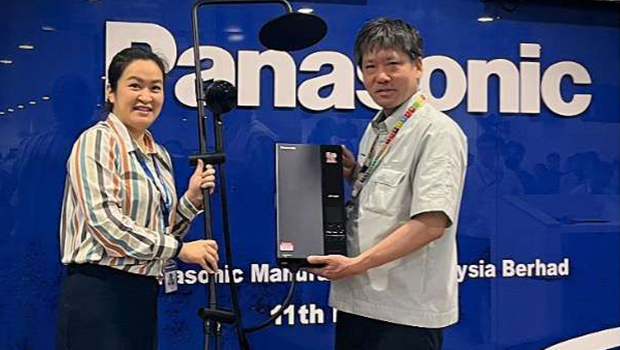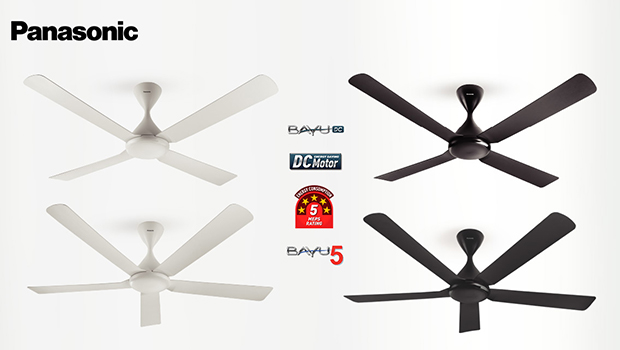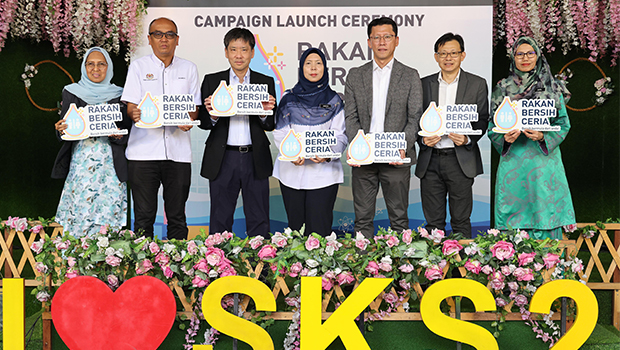Confirmation of the Deodorising Effect of nanoe™ X (Hydroxyl Radicals Contained in Water) on Odours in the Nursing Care Environment; Nurses Experienced the Effect at a Facility

Osaka, Japan – Panasonic Corporation announced that it conducted deodorisation tests for nanoe™ X and confirmed their deodorising effects under the guidance of Professor Megumi Mitsuda of Daido University. During the tests, nanoe™ X was exposed to two types of odours: Odours in elderly nursing care environments specified in JACA#No50, and urine odours (paracresol). Furthermore, with the cooperation of Mr. Junichi Hiraguri, Chairman of the Japan Care Association, monitors evaluated wall-mounted and packaged air conditioners equipped with a nanoe X Generator Mark3*1 installed in a nursing care facility. The company obtained results indicating that nurses working at the facility were able to experience the effects of deodorisation.
As society continues to age rapidly, the shortage of nurses has become a pressing issue. According to the population statistics data for 2022 released by the Statistics Bureau of the Ministry of Internal Affairs and Communications, the number of people aged 65 and above in Japan has reached 36.27 million, accounting for 29.1% of the total population*2. The number of people who need nursing care is increasing year after year; however, some research results show that approximately 80% of nursing care establishments are facing a shortage of nurses*3.
Panasonic focused on the issue of odours in nursing care environments by conducting interviews with individuals involved in nursing care facilities. Although ventilation and deodorising sprays are the main measures to combat odours in nursing care facilities, ventilation alone may struggle to deodorise odours adhering to clothing fibres, etc. On the other hand, when using a deodorising spray, it proves effective against odours clinging to clothing. However, it is difficult to deodorise the entire room, making odour management a concern for nurses.
Therefore, Panasonic verified the deodorisation effects of nanoe™ X, the company's proprietary technology, against odours in nursing care environments, along with its previous efforts to verify the deodorising effects against odours stemming from cigarettes, pets, the human body, and other sources. In addition, Panasonic actually introduced products equipped with a nanoe X Generator Mark3*1 to a nursing care facility to evaluate the products' deodorising effects through monitors. The verification was performed using the ingredients*4 associated with "odours in elderly care environments" and paracresol, which is a residual odour component, as simulated odours. As a result of sensory evaluations based on the 6-level odour intensity measurement method, the deodorising effects of nanoe™ X were perceived, reducing the odour intensity to a "weak odour in 60 minutes" and a "barely perceptible odour in120 minutes." Furthermore, in the evaluation by monitors at a nursing care facility described below, all 18 nurses at the facility responded that they perceived the deodorising effects of nanoe™ X
Based on these results, Mr. Hiraguri, Chairman of the Japan Care Association, said, " nanoe™ X is a technology that contributes to solving odour problems in the nursing care industry and is expected to offer similar benefits for in-home caregiving. I would like to recommend it as a preparation for individuals who are currently providing care or those who will be doing so in the future."
In order to realise its vision of serving as "the ideal partner that supports people's lives," Panasonic will continue to conduct such verification tests both domestically and internationally, with the aim of maximising the effectiveness of nanoe™ X. At the same time, the company will deliver safe, secure, and clean environments to people worldwide in the future.
[Comment from Mr. Junichi Hiraguri, Chairman of the Japan Care Association]
I believe that one of the reasons for the shortage of nurses is the problem of odour management. The odours emanating from excrement and other substances put a burden on nurses. I suspect that the number of individuals willing to become nurses has declined due to their actual experiences or the perception of caregiving they have seen or heard. In the past, when I introduced nursing care robots to the nursing care facility I oversee, I witnessed a substantial surge in job applications. Based on this fact, I firmly believe that creating a comfortable working environment for nurses will help address the shortage of nurses.
[Deodorising effects of nanoe™ X]
A nanoe™ X generator releases nano-sized particles with deodorising effects throughout spaces, effectively addressing even odours that cling to clothing fibres, etc. In addition, since nanoe™ X generators are installed in the company's air conditioning home appliances, such as air conditioners, nanoe™ X is released into spaces simply by using the home appliances. Furthermore, there is no need to supply chemicals to the nanoe™ X generator or carry out maintenance or replacement work.
<Deodorising effects>
■ Verification data
- Verification organisation: Product Analysis Center, Panasonic Corporation
- Substances subject to verification:
Odours in nursing care environments (JACA#50 "Odours in elderly nursing care environments")
Urine odours (paracresol) - Equipment to be verified: Air blower equipped with a nanoe X Generator Mark3*1

- Verification method: In a test space approximately 23 m3, a bleached cloth to which the odours had adhered was placed in the centre of the test space. The air blower was used to fill the test space with nanoe™ X with 48 trillion hydroxyl radicals generated by the nanoe X Generator Mark3*1 for exposing the cloth to the radicals for a specified period of time. After the exposure, a sensory evaluation (6- level odour intensity measurement method (Figure 1)) was performed to compare the odours with those when left in the natural environment. (The subjects consisted of men and women in their 30s to 50s who had passed an olfactory panel test.)

- Verification results: Figure 2 shows the verification results of deodorisation in the nursing care environment, and Figure 3 shows those of urine odour deodorisation.


<Evaluation by monitors>
■ Verification data
- Verification organisation: Japan Care Association
- Facility subject to verification: 2nd floor private rooms and living room in the "Group Home Aozora" nursing care facility (Figure 4)
(The 1st and 2nd floors are connected by stairs and an elevator, with the 1st floor serving as a conventional nursing care facility.)

Mark3*1 equipped products subject to verification
- Equipment to be verified: Wall-mounted and packaged air conditioners equipped with the nanoe X Generator Mark3*1

- Verification method: Approximately one week after the introduction of the products to the nursing care facility, a survey was conducted among nurses working at the facility.
Throughout the evaluation period by monitors, ventilation and deodorising sprays were not used for deodorising purposes.
(Opened the windows only when cleaning the rooms to avoid dust.) - Verification results: All 18 nurses on duty during the evaluation period responded that they had perceived the deodorising effects of nanoe™ X (Figure 6).
(Note : This is just personal opinion. The results are based on the results of monitoring at the facility in question, and the effects will vary depending on usage conditions and environment.)

■ Principles of nanoe™ X generation
nanoe™ X, measuring approximately 5 to 20 nm in size, and which contains hydroxyl radicals, is generated by cooling the atomizing electrode with a Peltier element, creating water through the condensation of moisture in the air, and applying a high voltage between the atomizing electrode and the counter electrode plate. (Figure 7)

*1 nanoe X Generator Mark3*1 has the largest amount of hydroxyl radical in the history of nanoe™ which generates 48 trillion hydroxyl radicals per second, 100 times the hydroxyl radical contained in traditional nanoe™
*2 Statistics Bureau, Ministry of Internal Affairs and Communications: Statistics Home Page/2022/Statistical Topics No.132.<https://www.stat.go.jp/data/topics/topi1321.html>
*3 Survey period: July 2019, Survey entity: VisasQ Inc. (https://visasq.co.jp/)
*4 Japan Air Cleaning Association: Air Purifier Performance Evaluation Guidelines (JACA50), 2016
Disclaimer:
This press release contains information and results of tests conducted on certain subject matters and/or environment.
Findings relate to specific and distinctive assessment. No presumptive representation is made on untested matters.
Recommend Pages
News articles relevant to this topic were not found.
-
Launch of U series Rain Shower by Panasonic Manufacturing Malaysia Berhad

-
Panasonic Launches Next-Generation Air Conditioning Series to Redefine Home Comfort in Malaysia

-
Panasonic Sets New Malaysia Record, Inspires Youth Environmental Action through Battery Recycling Drive

-
Launch of Panasonic Bayu Ceiling Fan by Panasonic Manufacturing Malaysia Berhad

-
Panasonic Strives to Combat Haze with Innovative Indoor Air Quality Solutions

-
Panasonic Malaysia Champions School Hygiene with Groundbreaking Bidet Initiative

-
Cumulative Global Shipments of nanoe™ Devices Exceed 100 Million Units

-
Pathogenic Fungus*1 99% Inactivated by nanoe™ Technology











